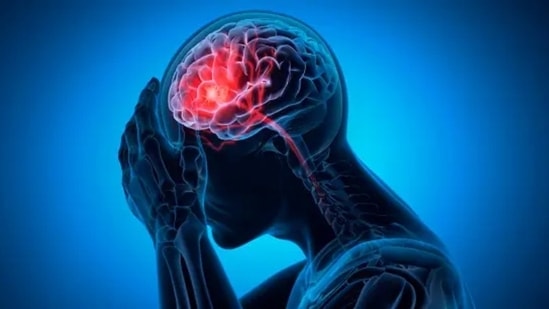
Understanding the different types of brain strokes: Neurologist explains
8 months ago | 97 Views
The brain requires constant supply of oxygen and nutrients to function properly. When the oxygen flow to the brain stops, even for a brief period of time, it can be dangerous. A brain attack or a stroke happens when the blood flow to the brain stops. The common symptoms of stroke are trouble in walking, understanding and speaking. Paralysis, or numbness in the face, legs or arms are also common symptoms of spotting a stroke or a brain attack. In an interview with an Lifestyle magazine, Dr Sanjay Pandey, HOD, Neurology, Amrita Hospital, Faridabad, said, “Depending on the site of the lesion in the brain, variable presentations can occur, including speech abnormalities, loss of sensations on the same side as the weakness, symptoms related to the loss of balance function maintained by the cerebellum, altered psychological behavior (agitation or fear), or even loss of bladder or bowel control.”
“Common risk factors for stroke include diabetes mellitus, hypertension, hypercholesterolemia, smoking, and alcohol consumption. Young-onset stroke can be caused by underlying coagulopathies, congenital or acquired heart diseases (e.g., rheumatic heart disease), and collagen disorders,” the Neurologist added.
Dr Sanjay Pandey classified brain stroke in two forms - Ischemic stroke and hemorrhagic stroke
Ischemic stroke:
Why does it happen?
Ischemic stroke occurs due to an obstruction in the blood flow within cerebral vessels that supply the brain. It can be further divided into thrombotic stroke and embolic stroke.
Early symptoms:
Patients with an ischemic type of brain stroke usually present with loss of consciousness, sudden fall, deviation of the angle of the mouth to one side, weakness in the arms and legs, or complete paralysis of one half of the body.
Hemorrhagic stroke:
Why does it happen?
Hemorrhagic stroke occurs secondary to the rupture of blood vessels and bleeding into the brain parenchyma due to high blood pressure levels. It is a type of end-organ damage that occurs in conditions of hypertensive emergency, where blood pressure shoots up beyond 220/110 mm Hg.
Early symptoms:
Hemorrhagic brain strokes present with limb weakness or paralysis, along with a throbbing headache.
What to do in case of treating a stroke patient?
“The key to treating a patient with brain stroke is to follow the ‘BE FAST’ motto, which means recognising symptoms early and reaching a health facility within 4-4.5 hours of the onset of symptoms. Beyond this golden period, it is tough to revive the dying tissues of the brain, and recovery outcomes become poor,” explained Dr Sanjay Pandey.
Read Also: don't know what to pack for your kid's lunch box tomorrow? try these off-beat sandwich recipes #





















